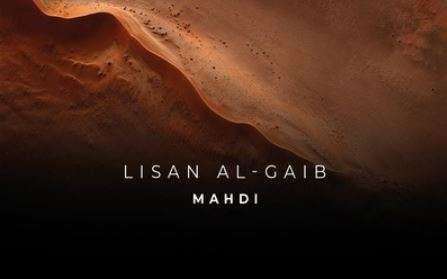 Animals have various miraculous features and each one of them is a miracle of creation. One of these animals is the koala. The koala feeding on eucalyptus leaves has various splendid features that ensure a comfortable life for it on trees.
Animals have various miraculous features and each one of them is a miracle of creation. One of these animals is the koala. The koala feeding on eucalyptus leaves has various splendid features that ensure a comfortable life for it on trees.The bodily design of the koala, a native of Australia, has flawless details that it needs in the kind of environment it lives. For instance, its limbs and claws ensure an easy climb to eucalyptus tress with wide trunks. The two fingers in its forepaws are separate from its other three fingers. When compared with the human hand, it can be said that the koala has two thumbs. These thumbs, which are quite different from other fingers, allows the koala to grip more securely.
Four of the limbs of the koala, with its claws that can stick into the soft and smooth trunks of trees like a hook, grasp tree branches with ease as if we grasp a stick, and render a comfortable climb for the koala. However, the features, of the koala, are not limited to these. Here are some of them:
A Miniature Bio-chemical Plant
Eucalyptus leaves have a very high fiber and low protein content. These leaves are rich in strong odorous oil, phenolic combinations and materials similar to cyanide that are inedible and even poisonous for many mammals. These materials, which are poisonous for other animals, lose their poisonous effect when it comes to the koala’s body, for the koala is equipped with a digestive system having a very special anatomy and physiology.
Just as in the case of other herbivorous mammals, the koala cannot digest cellulose, the major component of eucalyptus. However, this task is accomplished by cellulose-digesting microorganisms in the cecum of the koala.
The koala’s cecum, which is quite long, opens to large intestine. Indeed, the cecum makes up 20% of the total intestine. Its length is 1.3m long. (Hume, I. D. (1999). Marsupial nutrition. Cambridge: Cambridge University Press)
The cecum is the most interesting part of the koala’s digestive system. The access of the leaves to the digestive system is delayed right at this point. Thanks to this delay, the microorganisms in the cecum transform the cellulose into a structure from which the koala can benefit. With this structure, the koala’s cecum can be likened to a bio-chemical plant. While cellulose is being treated in this plant, oil and phenolic combinations, which are poisonous chemicals, are rendered ineffective in the liver.
As is known, the unique food of the koala is eucalyptus leaves. This means, the animal meets its carbohydrate requirements entirely by cellulose digested by microorganisms. In the absence of microorganisms, it is obvious that the koala cannot survive. The One Who creates these two creatures in perfect harmony is the All-Mighty Allah.
Allah is aware of all the needs of the living-beings. He creates them perfectly. Such examples prove Allah’s infinite power to us. In one of the verses in the Qur’an, Allah relates that those who can use their intellect can understand this fact:
He said, “The Lord of the East and the West and everything between them if you used your intellect.” (Surat ash-Shu‘ara’: 28)
The Koala and the Balance of Water
In the language of Aborigines, the Australian natives, the word “koala” means “the one who does not drink water.” Indeed, the koala does not drink water, for it feeds entirely on eucalyptus leaves.
The eucalyptus leaves has a water content of around 40% to 65%. This ratio never drops below 40%. Because plants with less than 40% water content dry up and die. Thanks to this feature, eucalyptus leaves provide the necessary amount of water to the koala.
No doubt, this feature of the leaves is not sufficient alone. The koala’s body structure utilizing the water in the eucalyptus leaves is extremely important.
The system in the kidneys that checks water loss of the koala’s body has a flawless design. Yet, what is more important is the fact that the digestive system of the koala has the feature of holding water. This way, only a small amount of the water is thrown out from the koala’s body.
Thanks to the kind of digestive system that can hold water, the koala can rely on excess amounts of leaves that do not contain high amounts of water. If the digestive system of the koala lacked this feature, then the animal had to be down on earth, being in a constant search for water.
This means, the animal, which lacks proper features to survive anywhere except for trees, had to face many threats. However, thanks to its special bodily structure, the koala never meets such difficulties.
The Koala’s Protective Fur
The main factor that determines the koala’s body temperature is its fur. The fur is created in a way to ensure perfect heat insulation:
The intensity of feathers in the fur may reach around 55 feathers per square millimeter. The fur in the back of the animal covers 77% of the body surface. The feathers on the stomach, on the other hand, are only half as intensive as the back fur, and it covers only 13% of the body surface.
The length of feathers changes from season to season. In summertime, the difference between long feathers and short ones become even more.
The thick fur on the back is darker than the loose ones on the stomach; this way, the koala collects and insulates the sun’s heat. Despite the loose stomach feathers, the koala can adjust the grade of insulation by steepening them.
On windy days, the koalas on trees give only their middle-backs against the wind, and they curl-up into the shape of a ball. As the intensity of the wind increases, they bend their ears forward. This way, none of their limbs becomes vulnerable to the air stream. The back fur of the koala has the highest grade of insulation. It’s insulation is very close to the grade of insulation of the animals living in the Northern Pole.
The wind has only a weak effect upon this strong fur on the back of the animal. Under heavy wind, the fur can maintain a constant body temperature. Indeed, even on very cold days and under heavy winds, the fur’s heat protection capacity drops only by 14%. Such data indicates that for an animal living on the top branches of trees in forests, they are ensured a perfect protection against cold.
The koala’s metabolism rate is also regulated in a way to complement the heat insulation of the fur. The metabolism of the koala is quite slow; it is only 74% of other animals’ metabolism rate. With such a slow rate, the animal also has a low water loss.
The Koala is a Great Deadlock for Evolutionists…
Let’s remember the features of the koala:
- The koala has a body structure that helps it to easily climb trees and live a comfortable life there.
- Thanks to the special design of its digestive system, the koala can get enough food and water from the eucalyptus leaves they find in ample amounts.
- It has a physiological system that eliminates the poisonous effects of eucalyptus oils.
- It has a metabolism that ensures maximum use of water taken from leaves.
All of these features are required for the survival of an animal such as the koala that lives on trees. Could it be that these features, which are essential for the survival of the koala, have come into existence by chance, as evolutionists assert?
A man of wisdom, who is able to think without prejudice and objectively, has only one answer to this question.
No. It is the All-Mighty Allah Who has created the koala with its flawless features. Allah reveals His infinite compassion and mercy through these features He grants to all living beings. Our Lord informs us about the miracles He creates in living beings as follows:
And in your creation and all the creatures He has spread about there are Signs for people with certainty. (Surat al-Jathiyya: 4)

